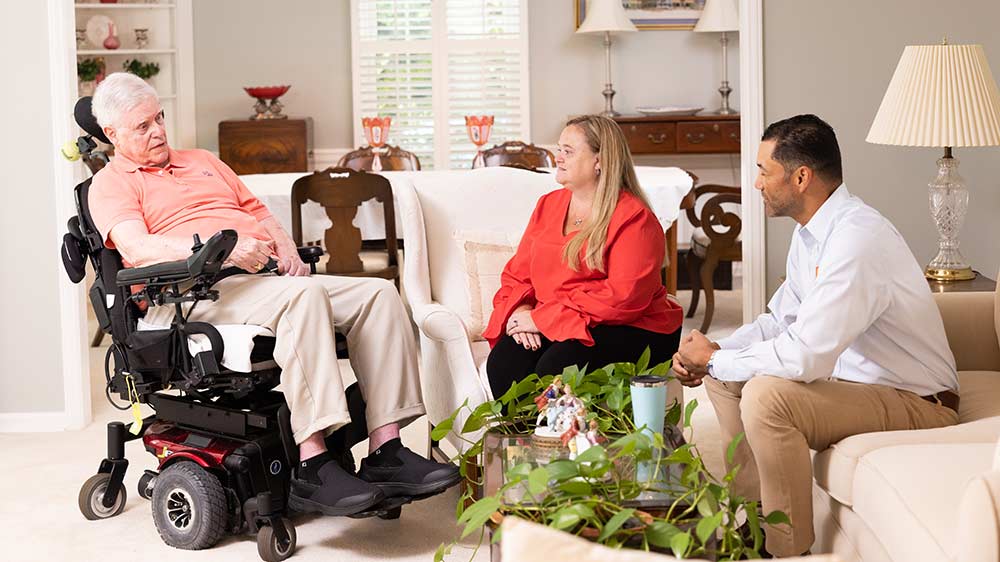

The Ultimate Guide to Medical Alert Options That Are Easy and Affordable
We tend to think of medical alert systems in today’s terms when, in fact, the evolution of alert devices goes back centuries. In the 17th century, hand bells were a call for help. The invention of the telephone in the 19th century allowed technology to transform the concept.
The category has grown tremendously since the 1980s when the alert pendant, one of the most recognizable examples of an alert system, was advertised in commercials. The call button kick-started the development of a myriad of alert systems that continues today. With more seniors wanting to age in place and ease their concerns and those of family and friends, a medical alert system may be just the ticket.
Although landline technology is still available from many manufacturers, the technology to call for help has evolved exponentially. “Today, help can be summoned with the aid of alert systems that employ cellphones, cameras, sensors, radar and Alexa,” according to Bailey Paxton, Right at Home’s Director of In-Home Care Technology and Innovation.
How Do Medical Alert Systems Work?
Medical alert system providers offer diverse options. Here is a simple explanation of how the systems work.
- The user presses a button on a pendant worn around the neck or on a bracelet or smartwatch around the wrist.
- The information and location of the user are sent to the service provider’s emergency operators.
- If possible, the operator assesses the problem by conversing with the user. If the user is unable to communicate, the operator will summon emergency help and notify others the user has identified in advance.
- If the situation is not an emergency, the operator will contact a neighbor or family member to help.
In addition, depending on a senior’s physical or mental condition or for those with Alzheimer’s, dementia, or other cognitive decline, cameras with built-in fall detection may be the answer. They can be installed anywhere in the home. For a less intrusive solution, some providers offer radar monitors to detect falls.
For those individuals who are independent and out and about, medical alert systems with GPS tracking will identify a user’s precise location when a call for help from the user comes.
For more information on how medical alert systems work, visit the National Council on Aging (NCOA).
What Do You Need the System To Do?
The first step in selecting a medical alert system is to determine what you need it to do. Consider the answers to these questions:
- Are you out and about driving, shopping, or taking a walk around the neighborhood? If so, you may want to consider a device with GPS. The system will detect your location if a problem occurs.
- Is fall detection needed? According to the U.S. Centers for Disease Control and Prevention, approximately 36 million seniors will fall each year. More than 1 in 5 falls cause an injury. A call button or other system will connect you to your provider, family, or emergency services.
- Do you want to just make a connection? Some systems allow you and your friends and family to connect whenever you choose.
The above are only a few of the services available. For a comprehensive list and recommendations, visit the AARP and the NCOA. Forbes Health also lists its favorite alert systems.
What Fees Are Associated With the Purchase of Medical Alert Systems?
Installation fees are usually one-time charges; however, some companies may include the fees in the purchase price. Most medical alert systems charge a monthly fee of $20 to $30. However, for on-the-go systems, you will likely pay between $29 and $45.
The NCOA advises, “If you’re ordering online, installation or activation fees often appear only at the very end of the transaction when you’re entering your payment information. Before you purchase a system, our Reviews Team recommends calling to ask a customer service representative if they charge activation, installation, or processing fees.”
Medical alert systems are not covered by Medicare Part A or Part B, but Medicare Part C, also known as Medicare Advantage, may cover some of the cost.
How Is Right at Home Helping With Selection and Monitoring?
Right at Home works with several vendors. Each vendor undergoes a thorough vetting and testing process to be a Right at Home partner. If you would like to learn more about which medical alert system is right for you, reach out to your local Right at Home office.
About Right at Home
Right at Home provides a range of in-home care options for seniors and adults with disabilities. Whether it’s helping with dressing and hygiene, providing medication reminders, or simply providing transportation to medical appointments, Right at Home’s dedicated caregivers will help you or your loved one navigate life. Call your local Right at Home office to find out more.







